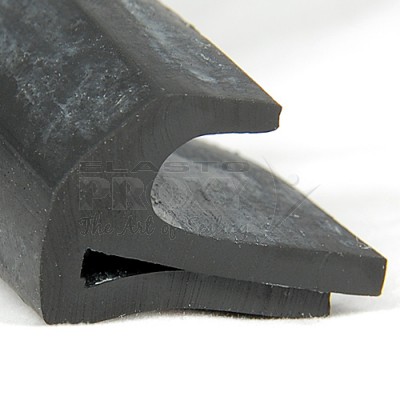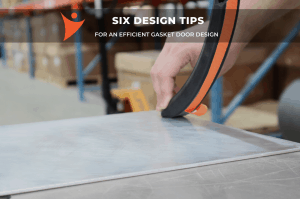John Rye
Branch Manager at Elasto Proxy
Water filtration systems remove impurities from water through physical barriers, chlorine disinfection, or ultraviolet (UV) light. In wastewater treatment plants, metal gates are bolted to concrete frames to control liquid flow and channel the effluent for disinfection. To prevent leakage, a rubber seal is fitted to the bottom of the gate’s frame. This seal attaches to the gate with bolts, and must withstand prolonged exposure to water and contact with the concrete base.
When a manufacturer of water filtration systems needed a high-quality sealing solution for its gates, Elasto Proxy delivered. By listening to all of the partner’s needs and analyzing all of their requirements, , we recommended a standard rubber profile for custom fabrication, helped with compound selection, and applied our cutting and joining expertise. Today, Elasto Proxy stocks this custom rubber seal at our warehouse in Newmarket, Ontario, and ships quantities according to the manufacturer’s sales forecasts.
Seal Profile and Compound Selection
As an experienced custom fabricator, Elasto Proxy can solve sealing challenges where an existing rubber component hasn’t met service conditions. For the manufacturer of water filtration systems, the bottom seal on the metal gate was an existing part that required stronger joints, better contact sealing, and proper compression and recovery. The 60-durometer EPDM lip seal (J-seal) that we recommended met all of these requirements, while controlling costs and strengthening the supply chain.
First, Elasto Proxy analyzed the current seal design, a large P-shaped profile made of natural rubber. At nearly 2-inches high and 4-inches wide, this gate seal was especially thick. To promote compression, the gasket had a hollow center yet still required a significant amount of force. The profile’s corners were probably joined with cold-bonding, a cost-effective splicing method that’s better suited for gaskets that won’t be exposed to high temperatures or outdoor environments.
Next, our technical team analyzed requirements from the U.S. Food and Drug Administration (FDA), and determined that natural rubber wasn’t required for this application. This was an important discovery since EPDM rubber offers greater resistance to UV light, the disinfection method used by manufacturer’s water filtration system. The J-seal that we recommended also provided the right hardness and shape to support compression resistance.
Water Jet Cutting and Infrared Splicing
After replacing the P-shaped profile with a lip seal and recommending EPDM instead of natural rubber, Elasto Proxy applied its custom fabrication expertise. To produce a pattern of bolt holes for attaching the rubber seal to the metal gate, we used our water jet cutting machine to make fine, fast, precise cuts. To produce strong bonds and support the lip seal’s large size, we used our new infrared (IR) film splicer. Among its many advantages, IR splicing is faster than cold bonding and less expensive than molding.
Next, the custom rubber seals that Elasto Proxy crafted were subjected to rigorous in-house testing by the manufacturer. By working closely our partner, we revised the first die and then used a second tool to achieve the desired results. Today, Elasto Proxy holds the customer’s seals in stock and ships them according to annual usage. Our quick turnaround time meet their needs, and there are now over 50 other sizes that incorporate our custom-fabricated profile.
How Can We Help You?
Do you have questions about specialty lip seals for your application? For 25 years, Elasto Proxy has been solving sealing and insulation challenges in a variety of industries. By listening to all of your application requirements and analyzing all of your needs, our solutions providers can help.
Please contact us for more information, or join the conversation on our social media channels. Look for a post with a link to this blog entry on LinkedIn, Facebook, Google+, and Twitter. Elasto Proxy has a YouTube channel, too. Finally, please subscribe to our free e-newsletters. They’re a great source of information delivered right to your email inbox, and they provide links to blog entries like this one.










